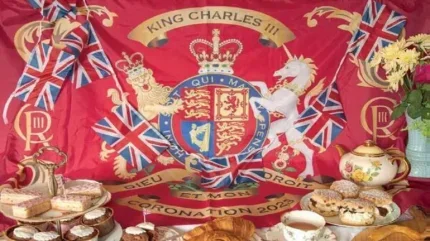
It has been a momentous year already with the coronation of King Charles III in May. Much has been said about the ceremony, even in its more pared down format during the cost of living crisis.
However, when Her Majesty Queen Elizabeth ll had her coronation in 1953, we were just starting to recover from the effects of the Second World War, and in this country was also in very straitened times, with ‘export or die’ the prevalent slogan at the time.
So, what has this got to do with drycleaning you may wonder? For a long time before the cost of living crisis it was getting more and more difficult to survive in the textile care industry, with a seemingly permanent increase in the price of utilities and textile care products and a marked decrease in the amount of drycleaning coming in.
In 1953 the average price for cleaning a suit was 8 shillings, which works out around 40p. In 2023, as Charles was crowned, the average price for cleaning a two-piece suit is £14.65.
It seems like a big disparity in price and an immediate reaction from many not in the industry would be that it affirms their suspicions that drycleaning prices are a rip-off
I decided to do a reverse calculation in order to find out what the 40p cost would actually be equivalent to in 1953 and the results were that the ‘average’ cost of cleaning a suit in 1953 in today’s money was £14.28p Seventy years later and it is a very similar amount at £14.65.
So, the next time you hear that drycleaning prices are always going up, just inform them of this fact and that we, in the textile care industry, have for many decades swallowed massive operating cost increases and absorbing them so that our customers still get the value that they did 70 years ago.
Across the pond
Some arguments you have just got to walk away from. I will on occasion read an online drycleaning blog that from the USA. It is great in theory, because it is meant to be a site where drycleaners can ask for help and advice from their peers, and being America, there is no shortage of advice and opinion and, in fact, drycleaners. For instance, if someone has a very difficult stain to treat and remove from a high value item, they might ask for advice.
The advice given is often their own tried and trusted methods, and on occasion this can lead to heated debate as so many drycleaners believe that they know best and to disagree with them is to cast aspersions on their ability as a drycleaner.
I usually stay well away from adding any comments. However, recently, and as a trained garment fault appraiser, I did decide to put my two penn’orth in, when someone was having issues with a suit jacket that had delaminated. Many cleaners advise it could be fixed with careful re-pressing to remove the rippling effect, but forgot to mention that this is a temporary fix. It was at this point, when trying to be helpful that I sent one of my old delamination reports which I hoped would help explain the causes and suggested a remedial course of action, which in the main was to go to the garment retailers armed with a report if needed.
My goodwill action was pounced upon by someone who said that for good customer service and in order to retain his customer loyalty, in cases such as delamination, he offers a no quibble compensation policy rather than getting the garment manufacturer’s retailer involved and that this was the only way for a good drycleaner to deal with it.
I just wondered how he manages to stay in business, and walked away from the argument.






